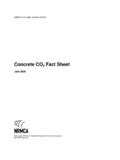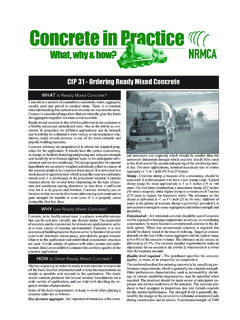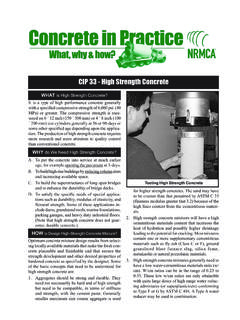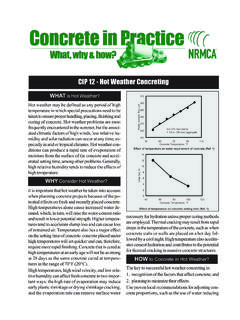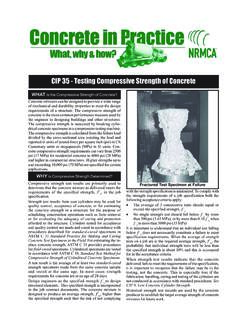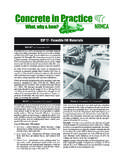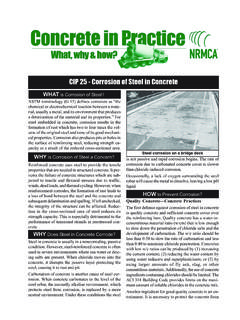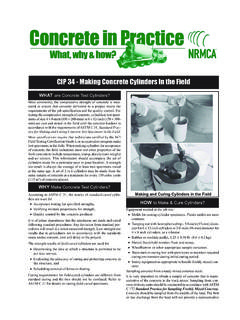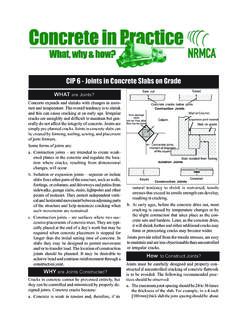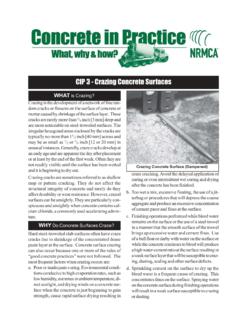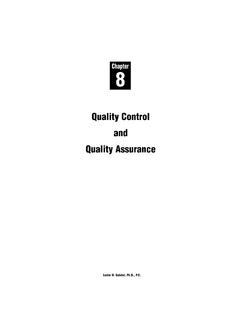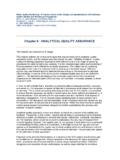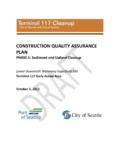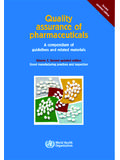Transcription of Mixing Water Control - National Ready Mixed …
1 CONCRETE in focus 23 Parts I and II of the Concrete quality series1,2 discussed that a good measure and benchmark of concrete quality is the Standard Deviation (SD) of compressive strength test results. The primary factors that impact the SD are variabil-ity associated with materials, production and testing. In order to reduce the strength standard deviation the concrete producer needs to manage those aspects of variability that can be controlled. Part IV3 discussed and quantified the concrete strength variability due to variation in Water and air content. It concluded that in order to attain a low SD of compressive strength, among other things, it is important for the producer to attain a low variation in Water con-tent and air content as they contribute significantly to the varia-tion in strength.
2 This article discusses how a producer can manage the various factors that will reduce the variability of Mixing Water content in concrete WaterCompared to other ingredients, there are several sources (and potential errors) by which Mixing Water is incorporated in a concrete mixture. ASTM C944 and ACI 1175 state that the total Mixing Water should be within 3% of the quantity required by the mix design. ASTM C94 states that Mixing Water includes Water added to the batch, ice added to the batch, Water occurring as surface moisture on the aggregates and Water introduced in the form of admixtures. Th e primary sources of Mixing Water variation and methods by which it can be controlled to be within a tight tolerance are discussed below:Washwater in truck mixer drum from previous loadWhen concrete is discharged at the jobsite a mortar coating adheres to the surface of the mixer drum.
3 Depending on the situa-tion, type of mixture or company practice, the concrete mixer truck operator may wash the interior of the drum at the jobsite or on arrival at the plant. In some cases, this Water may not be discharged and remain in the truck when the next load is batched. Washing the mixer drums between every load leads to several possible problems:1. It consumes a lot of Water ;2. If discharged, it generates process Water at the concrete plant that will have to managed in compliance with environmental regulations;3. If not discharged, Water (anywhere from 5 to 30 gallons) may remain in the mixer drum when the next load is C94 recognizes the last possibility and states a condition that the wash Water retained in the drum for use in the next batch should be accurately measured.
4 However, it is not easy to accurately Mixing Water ControlPart V of Concrete quality SeriesBy Karthik Obla, , , VP, Technical Services, and Colin L. Lobo, Sr. VP, Engineeringmeasure the quantity of wash Water retained in the drum. Th erefore in compliance with ASTM C94 truck operators should be educated of the importance of disposing of all of the wash Water prior to batch-ing a fresh concrete load. Th e process of discharging the mixer wash Water into a wash out pit may take time but it is an important step toward achieving quality concrete. Th e more common industry prac-tice is to not wash out the mixer drum after every load. Th e mor-tar coating will not signifi cantly change the Water content or any of the properties of the new load of concrete.
5 Washing the inside of a mixer drum may be necessary in hot weather conditions when it can lead to undesirable hardened concrete buildup inside the drum, with special concrete containing color or fi bers, or when required by company waterBatch Water is the Water added to the Ready Mixed concrete truck. Generally this constitutes the primary source of Mixing Water . Water can be measured by volume using Water meters or volumetric tanks; or by weight in scales. ASTM C94 requires that the added Water should be accurate to within 1% of the design total Mixing Water . Th e NRMCA plant certifi cation process requires that volumetric Water measuring devices should be accurate to within of the desired amount of Water which corresponds approximately to an accuracy of 1% based on total Mixing Water for typical aggregate moisture levels.
6 Scale accuracy requirements are tighter. Th e NRMCA mea-suring tolerance is more easily verifi ed during a batching process or by review of batch records. Th e NRMCA plant certifi cation process requires that batching measuring devices be verifi ed for accuracy at stated frequencies or when there is reason to assume their accuracy is in question. It is one thing to have a well calibrated Water batching device. It is additionally important to ensure that the added Water in every concrete load that is shipped from the plant is within tolerance. Batching errors do occur from time to time. All computerized batch panels have some form of error monitoring and alerting system which may be overridden and accepted with a keystroke. Automated evalu-ation and alerting systems available nowadays can send e-mail alerts to quality Control / quality Assurance (QC/QA) personnel when a load is found to be outside prescribed or company-set tolerances.
7 Improving batching accuracy has been discussed at a great length Most chemical admixtures added to concrete contain in excess of 60% Water . It is important to consider the Water content contributed by chemical admixtures, particularly those which are used in high dosages such as corrosion inhibitors or accelerators. In general, if the tech talk24 MARCH/APRIL 2011admixture dosage is around 1 gallon per cubic yard or greater, batch Water compensation should be made to account for Water incorpo-rated with admixtures. For the admixtures that are used in high dos-ages, if the dosages change signifi cantly between loads and the Water from the admixtures had not been considered then it may lead to a high Mixing Water Water from AggregatesFree Water from aggregates constitutes a portion of the Mixing Water .
8 If the coarse aggregate and the fi ne aggregate have a free mois-ture content of 1% and 5%, respectively, assuming a typical concrete mixtures that contains 1800 lbs of coarse aggregate and 1200 lbs of fi ne aggregate, the contribution that the aggregates provide to the Mixing Water is 78 lb/yd3. If the total Mixing Water is 270 lb/yd3 the free Water from the aggregates contributes 29% of the Mixing Water in this example. Th erefore, an error in estimating the aggregate moisture content can cause a signifi cant variation in the Mixing Water content. To address this many concrete producers use moisture probes in the fi ne aggregate bins. Th ese moisture probes provide real time mois-ture measurements of the fi ne aggregate based on which the added Water is adjusted automatically or manually.
9 NRMCA plant certifi ca-tion requires that moisture probes be verifi ed for accuracy at defi ned frequencies or when there is an assumption of error. Alternatively, aggregate moisture should be determined at the concrete plant using a hot plate or a microwave oven according to ASTM C566. If such a process is followed the NRMCA plant inspector guide suggests that the aggregate moisture be measured not less than 3 times per week. Th is can vary depending on aggregate storage methods or frequency of receiving shipments. Moisture probes are not commonly used in coarse aggregate bins due to wear. Coarse aggregate moistures should be periodically measured using a microwave oven or a hot plate. Since they constitute the largest quantity of ingredient batched, a small change in the coarse aggregate moisture can result in a large change in the Mixing Water content.
10 Another important factor is the proce-dures used by the loader operator to feed aggregates from stockpiles to the batch plant. Th e key is to avoid loading aggregates with variable moisture and to ensure that the aggregate being batched is represen-tative of the moisture content assumed in the batching process. In general, working the complete face of a stockpile tends to average out the moisture content and minimize added at the slump rack Almost all concrete is accepted at the job site based on a certain slump level or visual consistency to facilitate ease of placement, regardless of whether the project specifi cation includes a slump requirement. After loading all of the materials, truck mixer operators move the truck to the wash down area or slump rack to clean the load-ing hopper, chute, and sides of the mixers before leaving the plant.
